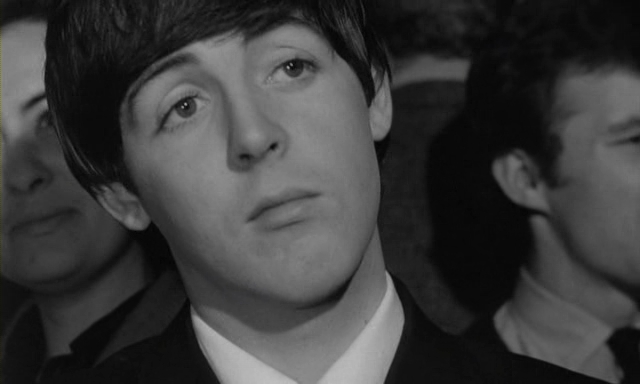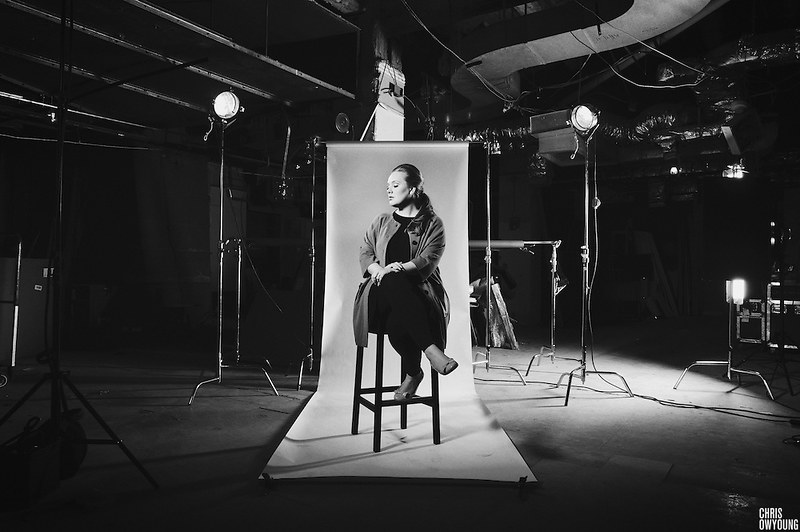8 Official Data Which Are Just False
The world of charts and sales has always been a tricky jigsaw. It now also requires to sort accurate information from made-up claims. Definitely, social media made it wild. Fanatics and trolls have been spreading fake information more than ever. This led us to be mad about official data, regarding it as the be-all and end-all of our sources. The issue is that official doesn’t necessarily mean accurate!
Obviously, receipts claimed to be official often aren’t. For many, it is all very confusing, in part because of Wikipedia-like websites which assume that every data identified on newspapers is valid. Clearly, it is untrue and even a source like the Billboard isn’t an official source. In fact, they report sales figures, they don’t produce them. Instead, their sources are organizations like Soundscan or industry representatives. Don’t get me wrong, the Billboard is a wonderful magazine and they do a great job. It’s simply that they don’t sell music by themselves nor do they account for sales. Thus, they too depend on the accuracy of their first-hand sources. I’ll still use one example from them in this post to show explicitly how to interpret their articles correctly.
Except for this case, figures pointed out in this article are purely official. The BPI, Amprofon, ARIA, FIMI and EMI among others are responsible for official though inaccurate data. Learn how this is all possible and how to avoid the traps!
Taylor Swift’s reputation sold 4,5 million pure units Worldwide? (IFPI)
Massively hyped upon release, Swift‘s reputation was claimed 4,5 million sales during 2017 as per the last IFPI report. If you follow charts and sales, you know that it did about 2/3rds of that number. Technically speaking, this claim is correct though. Provided by Big Machine Records, the number reflects the number of copies they have sold as of December 31st, 2017.
This shipment vs retail sales trick is one of the first we learn to avoid when getting into music industry news. Basically, the label sold these copies, but they sold them to retailers which still need to find consumers for them. Throughout the years, agreements between retailers and labels have evolved. As of now, most contracts grant retailers the possibility to return copies they haven’t managed to sell. Frequently, labels refund unsold units up to a capped amount, usually 20%.
It’s important to realize that records labels earn money on shipments rather than retail sales. Still, returned copies result on losses for them. We can’t ignore it does happen.
The example of reputation is the most recent and obvious one, but there have been thousands of similar cases. How to identify them? The big gaps between shipments and sales happen in particular with Christmas cash-ins. More precisely, all records expected to sell a lot of units over a short period of time will be concerned. In the past, reports about sales of physical singles were always highly misleading because of that.
Of course, successful albums can match the highest hopes and even require additional shipments on a regular basis. Ultimately, reports made upon release from industry sources aren’t evidences of sales but instead a reflection of expectations.
Elvis Presley & the Beatles sold 1 billion records? (labels)
While majors never reported most claims attributed to them, they did report over 1 billion sales of both Presley and the Beatles. It’s official. Naturally, their fans believed it and more than 30 years later, uneducated media are still repeating these claims frequently.
These claims came out in 1983 and 1985, respectively. The singles era during which they debuted saw very few album sales. Consequently, labels took the habit to report all figures in singles equivalent units. Under that methodology, 1 album was worth 6 units, 1 EP was worth 2, 1 single was worth 1. Sales of 120 million singles, 20 million EPs and 140 million albums were then equal to 1 billion records.
For the sake of accuracy, the Beatles naming meant the band as well as its four members for EMI. To be precise, sales claimed were also to the geographical scope of the label. In Japan for example, Odeon licensed and sold various Beatles‘ early records instead of EMI.
Chart sites have known this story for several years. I still decided to include it here to highlight a key issue about charts & sales: labels don’t lie. They pay royalties to artists depending on their sales. Thus they can’t inflate numbers just like that. For marketing purposes though, they will always present numbers in a way that benefits the artist, leading us to confusion. To summarize, always wonder under which context a claim came out to best interpret it.
Black Eyed Peas’ The E.N.D. spent 2 weeks at #1 in the US? (Billboard)
June 25th, 2009, Michael Jackson passes away. Expectedly, his records’ sales go through the roof. In the US, he sells 2,6 million downloads in a week and owns the Top 3 best selling albums, led by Number Ones, a compilation from 2003. Inside the Hot 100 and the BB200 Album Chart though, he is almost absent.
In short, catalog records were ineligible to appear on both official charts. The Peas‘ smash album returned to the summit thanks to this technicality. Since then, the famous chart provider changed its rules to allow former records to chart again. Past charts remain as they are though.
I point out this chart trivia to highlight one big issue: tons of rules corrupt most charts. Records are excluded because they are old / low-priced / compilations / exclusive to one retailer / aren’t released in formats accounted for / etc. While these exceptions are often clear, it isn’t always true. They also tend to happen lower down charts, but as shown above it can distort the very top placings.
The frequent changes of rules also mess up all chart records. Madonna‘s The Immaculate Collection is her longest runner at the top in the UK with 9 weeks. True Blue follows at 6 weeks and then her remaining albums never dominated for more than 2 weeks. Crystal clear? Nope. Charts exclude compilation albums since the start of 1989. Previously, their impact was relatively low, so they haven’t bothered labels. From the first release of Now in late 1983, they started to dominate rankings every year at Christmas, blocking artists albums. As per rules in place from 1989, True Blue should have been #1 for 8 weeks instead of 6, Like A Virgin for 7 instead of 2. And Dire Straits‘ Brothers In Arms lost 8 weeks in the battle, leading for 14 weeks while it should have been 22.
Furthermore, there is more extreme distortions. A good example is the shameful rules the OCC is currently applying for its singles ranking. They artificially deflate sales and streams of popular songs to make sure their ranking stays dynamic. It concludes on absurd runs like Drake‘s God’s Plan which charted 1-1-1-1-1-1-1-1-1-10 although on this last week it was still the best performing song.
To summarize, charts are very useful and highly enjoyable, but always keep in mind their accuracy ends where their rules start.
Christina Aguilera’s Stripped sold 2 million units in the UK? (OCC)
The OCC, the Official Charts Company from the UK, argues Aguilera‘s Stripped sold 1,98 million units as of 2016. They rely on Defined Universe Sales (DUS) which provides them all their sales figures. The OCC pretends their figures are 100% accurate. In reality, they involve calculations. These calculations are mostly under control now. It wasn’t always true.
Their data include 1,818,939 sales as of August 20th, 2006. By then, the album was 3xPlatinum, representing 900,000 units shipped. Of course, her certifications weren’t up to date. Her catalog was audited on September 29th, 2006, one month after OCC’s claim. Surprisingly, Stripped went 5xPlatinum rather than 6xPlatinum. In other words, it had shipped less than 1,8 million copies, even with the copies remaining on shelves by then. Her debut record also failed to gain a Platinum award in spite of official, but inaccurate, sales of 364,414 units.
One may say the audit was possibly incomplete. It doesn’t happen for recent records anymore and we have more cases with detailed shipment data to confirm OCC figures are inaccurate. Thanks to the member of our team Martin, we can confirm from insiders’ data Queen‘s Greatest Hits III shipped 560,000 units by the end of 2008. By then, the OCC was already claiming 650,000 copies sold at retail.
All OCC’s figures for pre-1994 records
Messy charts, inaccurate scanning systems and now made up claims for historical records. The OCC’s flaws are getting more obvious as we discover additional information. Their goal was a very good one, compile all-time lists of best selling records. They published the top selling singles’ artists in 2002, then biggest selling albums in 2006. Since then, they also produced lists of top selling singles.
Positive initiatives and a lot of valuable information. But also various errors that the OCC refuses to admit and ultimately to fix. From the day they published the albums’ list, figures for several albums appeared to be delusional for many. The number of the Beatles‘ Sgt Pepper’s Lonely Hearts Club Band at 4,8 million, the ones of Queen‘s Greatest Hits at 5,4 million and Greatest Hits II at 3,6 million were pointed out. On the other side, various albums appeared with numbers well below their certified amount like Michael Jackson‘s Bad and Elton John‘s Very Best Of while Bob Marley‘s Legend figures were inconsistent with former retail sales claimed in the country.
With time, it appeared that Alan Jones, the compiler of these all-time lists for the OCC, did various mistakes. He took several claims at face value as in the Beatles‘ case. He added parts of Queen‘s 2/3 CD compilations into Greatest Hits I and II while not applying the same treatment for many other artists. Also, he missed all club sales for many albums, while considering a comprehensive shipment value for others.
Mistakes happen everywhere. The issue comes from they fact the OCC furiously maintain their position, continuing to add new sales to these completely flawed numbers. The result is chaotic: figures of all Top 10 albums are largely wrong in the high or in the low side. These official lists are just plainly false.
Justin Bieber’s Purpose sold 390,000 units in Mexico? (Amprofon)
In 2015, Mexican’s records industry grossed $108 million to make it the 17th market in the world. To put things into perspective, for that same year the market was worth $115 million in Switzerland and $223 million in the Netherlands. The US market was 46 times bigger at $4,945 million. Obviously, Mexico isn’t a big market for music recordings.
With this in mind, official awards put Bieber‘s Purpose from 2015 on 390,000 units, good enough for Diamond + Platinum + Gold awards. Surprising for sure. While one monster album can happen, Amprofon’s official awards have been raining lately. Years & Years‘ Communion, Lady Gaga‘s Joanne, Katy Perry‘s Witness, Imagine Dragons‘ Evolve, DJ Snake‘s Encore, Post Malone‘s Stoney and many more are all at least Platinum for a healthy 60,000 units criteria. Their performances on sales charts are nowhere near good enough to explain these awards. In fact, Stoney hasn’t even been released in Mexico.
This time, the flaw comes from communication. Unlike big organizations like the RIAA, Amprofon doesn’t communicate in detail its changes. As per existing certifications, it appears clear that they included streaming in their awards since the start of 2016. In all likelihood, they also include video streams. Whereas there may be only one artist who interests you, it is fundamental to check results of multiple artists to make sure there is no trap behind the numbers!
Adele’s 21 sold less than 500,000 units in Italy? (FIMI)
Back in December 2013, the modern day classic 21 was certified 8xPlatinum for 480,000 units in Italy. One week later, the Platinum criteria was decreased to 50,000 units. On Adele‘s CSPC article, the estimate for this record in Italy stands on 510,000 copies sold to date. This figures seems erroneous since certifications are automated in this country. Thus, if the album reached half a million sales, it should be 10xPlatinum. It isn’t.
Everywhere, the album added 6-9% sales to date to its tally up to late 2013. It sold well during 25’s promotional campaign. In Italy, it did so too. The album market there has dropped less there than in most remaining countries since 2014. In view of these elements, 21 seems very unlikely to have sold less than 20,000 copies during the last 4 years, a mere 4% of its certified amount.
Rules for certifications can be as tricky as the ones for charts. Automated certifications are based on scanned units. As GFK’s coverage increased, the FIMI adjusted its conversion. The scanning panel covered 66% of the market in 2011, 75% in 2012, 80% in 2014 and 90% today. In concrete words, what does it mean?
It means that today, 500,000 * 0,9 = 450,000 units scanned by GFK are required to be certified 10xPlatinum. The point is that when 21 was hot, the coverage was nowhere near 90%, but instead 66%.
Without checking chart facts, let’s just assume 21 sold 200,000 units in each 2011 and 2012 and then 80,000 units in 2013. As per panel coverages, it translates in GFK scanning 133,000 + 150,000 + 60,000 = 343,000 units by the end of that year. From 2014 to 2017, it was needed to scan 80% of a criteria to be certified. The 343,000 units scanned as of 2013, good enough to be certified for 480,000 units by then, were suddenly worth only 343,000 / 0,8 = 428,750 units. Under the new 90% ratio from 2018, they are valued at 343,000 / 0,9 = 381,111 units.
In order to be certified 10xPlatinum, 21 doesn’t only need sell the missing 20,000 units, but also to sell the 69,889 copies that are disregarded under their new official process. Ironically, although it sold many copies during these last 4 years and a half, the album is now further than ever from being awarded anew.
Billboard’s Top 25 Biggest Selling Latin Albums of the Last 25 Years
Last October, Billboard published a list of the best selling Latin Albums in the US since 1992. The problem is that it is completely wrong. Chart geeks are aware of Soundscan’s limits for long. This system scans sales in the US at retail since 1991. This process ignores sales at music clubs. Among other things, Soundscan’s patchiness led many people to question Mariah Carey‘s pair of Diamond certifications.
However, there are other dark areas on Soundscan figures that are less well-known. A big one is the massive underestimation of specialized retailers. I already pointed out this issue in the past. You can notice that I used the example of Enrique Iglesias, whose first 2 Spanish albums had scanned 380,000 and 275,000 units in the US, respectively, in spite of selling well over a million each.
During his early years, Iglesias sold mostly to the Spanish community and its specialized retailers. That’s why both albums scanned so few units in comparison to their real sales. More albums have had similar trajectories. Los Tigres del Norte‘s Jefe de Jefes which was #1 for 7 weeks in the Latin charts and went Platinum. However, it is simply absent from Billboard’s list. For all these pure latin releases, Soundscan registered only about 30% of their sales.
On their side, albums from Latin artists which had already crossed over to the main audience had most of their sales on traditional outlets. Selena‘s Dreaming Of You and Shakira‘s Fijacion Oral: Vol. 1 are good examples. The former scanned 2,94 million units, it competes with 3,54 million copies certified by the RIAA, a coverage of 83%. The latter scanned 1,02 million units for 1,1 million sales certified, more than 90% sales from the available panel.
As shown above, mixing these figures together makes no sense. The whole irony is that the list aims to celebrate the most successful Latin albums. It ends up deflating strongly… albums which sold well to the Latin fans.
Lessons learned: Billboard only reports figures. Their accuracy is thus fully down to the accuracy of the source they are using themselves.








